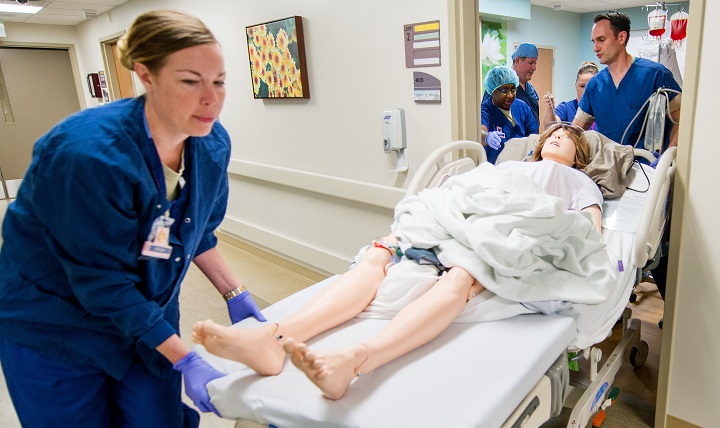Imagine dreading going to work every day. This dread may be because you dislike the job, or your boss, or even your co-workers. However, for thousands of Americans, one of the biggest reasons for dreading the work week is because of pain – back pain in particular.
Musculoskeletal disorders (MSDs) account for 31% of all workers who miss work due to an injury, according to the Bureau of Labor Statistics. MSDs include carpal tunnel syndrome, tendinitis, shoulder injuries, muscles strains, and back injuries. What are the top occupations at risk for back pain? What can we do to prevent it? Are you at risk?
Nurses Are At The Highest Risk Of Back Pain
Compared to other occupations, those who work in nursing – registered nursing as well as certified nursing assistants and aides – are at the highest risk for MSDs and, in particular, back pain. Nurses are not only on their feet for the duration of their shift – ranging from six hours to as long as 12 hours – but they are also constantly lifting, moving, and assisting patients.
Emergency And Prevention Workers At Risk For MSDs
Those in the emergency and prevention industry are also at a high risk for MSDs and back injuries. Such workers as firefighters, EMTs, and paramedics have high physical demanding jobs that require lifting and pulling. This lifting and pulling of oftentimes heavy objects and people puts strain on the back and the musculoskeletal system. It results in injuries to the shoulders and back, in particular.
Laborers And Freight Movers Also At Risk
Employees who work in warehouses and the operation of industrial vehicles are constantly lifting, bending, pulling, tugging, and carrying heavy objects. Many people who work in this industry experience pain in the shoulders, neck, and spine. It can oftentimes result in lifelong disability if left untreated. Furthermore, there is a high risk of workplace accidents from falling, which oftentimes results in debilitating back injuries.
Prevention Of MSDs And Back Pain
It’s difficult to prevent and avoid workplace injuries entirely, especially if it’s the result of an accident. However, taking preventative action may help to reduce your risk to injury from the daily job duties associated with your work. Staying healthy by controlling your weight and getting plenty of rest is essential to reducing injury from physical activity in work such as pulling, lifting, and bending. Making sure you’re conditioning and strengthening those muscles are most used at your job, as well as supporting muscles will also aid in injury prevention. Other preventative measures include:
- Posture and alignment
- Lifting properly
- Resting
- Maintaining fitness
OSR Physical Therapy Help With MSDs And Back Pain
If you do get injured at work or are experiencing work-associated pain, OSR physical therapists can help you get back to work quickly. With an exercise-based therapy program, along with other specialty rehabilitation techniques, your injuries won’t be debilitating for very long. Contact one of our offices today if you’re experiencing pain due to your work requirements.



